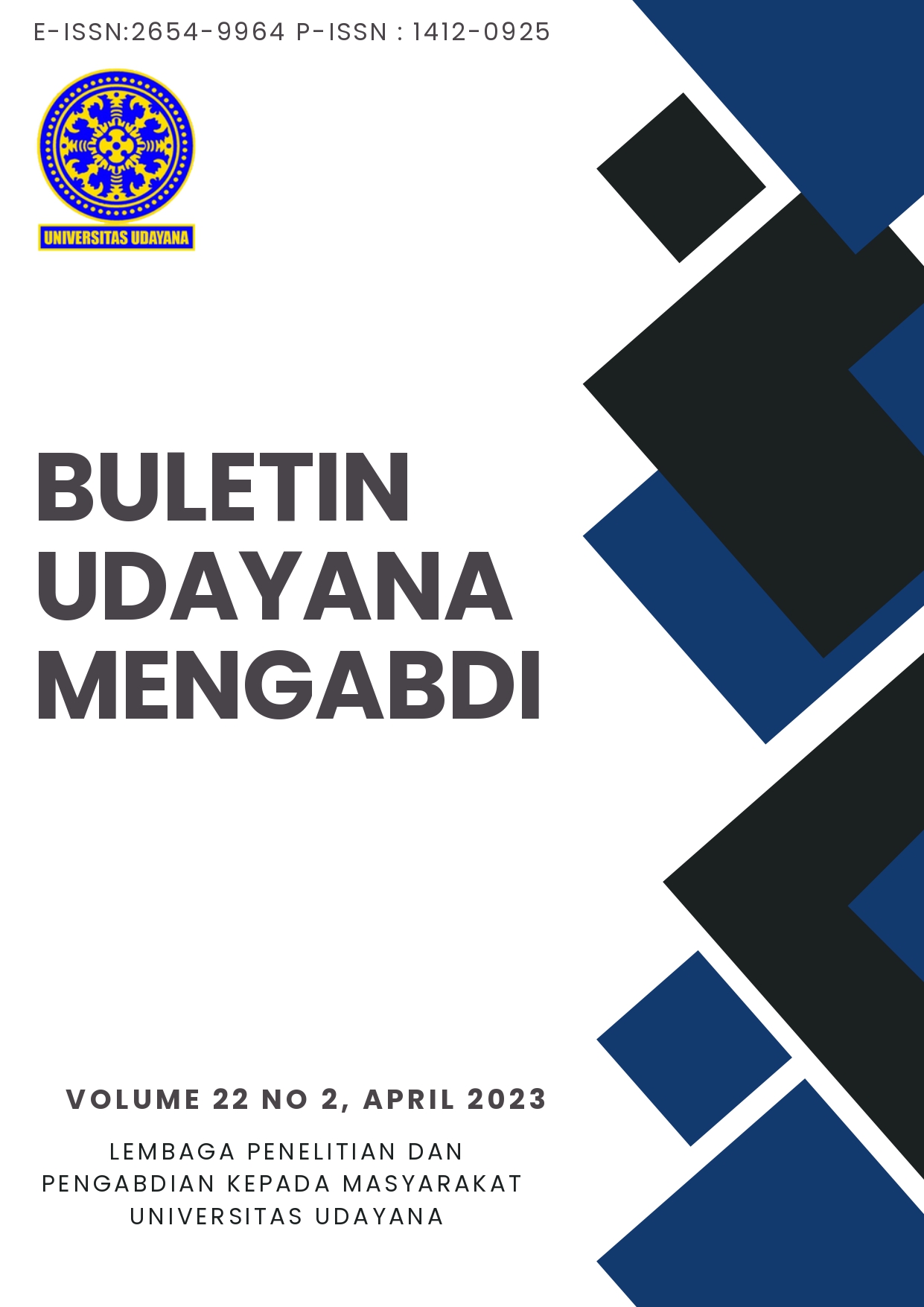EFISIENSI PENGGUNAAN KOLAM TERPAL SEBAGAI MEDIA PEMBESARAN NILA LARASATI (OREOCHROMIS NILOTICUS) PADA LAHAN PERKEBUNAN
Abstract
Larasati tilapia (Oreochromis niloticus) can digest food efficiently, has fast growth, and is more resistant to disease, broad adaptability, and high tolerance to various environmental conditions so that it is prospectively cultivated in flowing water ponds (circulation). Galungan Village has the potential of Aquatic Resources that can be utilized for cultivation activities for Larasati tilapia enlargement. This service is carried out in several stages, namely; the location survey stage for pond construction, seed preparation, outreach, and evaluation. The purpose of this service is to be able to create an efficient Larasati tilapia cultivation medium to maximize the potential of aquatic resources in Galungan Village. This activity starts from the process of making tarpaulin ponds which is an implementation of research, carried out by the Mina Asih Sejati Fish Farmers Group (Pokdakan). The result of this activity is that the tarpaulin pond has no leaks or damage after the process of filling the water for 2 days so the pond is suitable for spreading Larasati tilapia seeds. The next activities were seed distribution and delivery of larasati tilapia feed to Pokdakan as well as mentoring and counseling carried out by the Buleleng Regency Fisheries and Resilience Service. The conclusion from this activity is that the use of tarpaulin ponds as a cultivation medium can achieve maximum goals without having to damage the main crops on the plantation by minimizing costs to produce the maximum pond area.
Keywords: Aquaculture, Larasati Tilapia (Oreochromis niloticus), Tarpaulin Pond, Galungan Village
Downloads
References
DISKANLA. 2014. Profil Investasi. Kabupaten Buleleng
Djokosetiyanto D, Sunarma A, Widanarni. 2006. Perubahan ammonia (NH3-N), nitrit (NO2-N) dan nitrat (NO3-N) pada media pemeliharaan ikan nila merah (Oreochromis sp.) di dalam sistem resirkulasi. Jurnal Akuakultur Indonesia. Vol. 5. No.1. Hal. 13-20.
Hendriana, A. 2012. Pembesaran Lele di Kolam Terpal. Penebar Swadaya. Jakarta
Jumain., Hadijah., Mulyani. S. 2018. Peranan Penyuluh Perikanan Untuk Meningkatkan Produksi Dan Pendapatan Pembudidaya Tambak Di Kabupaten Sinjai. J. of Aquac. Environment. Vol. 1. No. 1. Hal. 15-23
Kordi, K. M. G. H. 2010. Budidaya ikan lele di kolam terpal. Andi. Yogyakarta.
Negara, IKW., Pebriani, DAA. 2017. Manajemen Pembesaran Lele Dumbo Clarias sp. Melalui Inovasi Kolam Terpal Di Desa Pakisan Kabupaten Buleleng. Samakia: Jurnal Ilmu Perikanan. Vol. 8. No. 1. Hal. 38-43
Negara, IKW., Restu,IW., Julyantoro, PGS., Suryaningtyas, EW., Pebriani, DAA., Wijayanti, NPP., Saraswati, SA. 2020. Pendampingan Pemberdayaan Ekowisata Perairan Dan Restocking Udang Galah (Macrobrachium Rosenbergii) Serta Ikan Endemik Di Daerah Aliran Sungai (DAS) Desa Galungan Kabupaten Buleleng. Buletin Udayana Mengabdi. Vol. 19. No.2 Hal 230-234
Suyanto, R. 2009. Pembenihan dan Pembesaran Nila. Panebar Swadaya. Jakarta.
Wulandari, M.C. 2021. Strategi Pengembangan Ekonomi Lokal Berkelanjutan Pada Kawasan Minapolitan (Studi pada Budidaya Ikan Desa Gondosuli Kecamatan Gondang Kabupaten Tulungagung). INDEPENDENT : Journal Of Economics. Vol. 1. No. 2. Hal. 158-177

This work is licensed under a Creative Commons Attribution-ShareAlike 4.0 International License.

This work is licensed under a Creative Commons Attribution-ShareAlike 4.0 International License.




.png)


1.png) GARUDA - GARBA RUJUKAN DIGITAL
GARUDA - GARBA RUJUKAN DIGITAL



